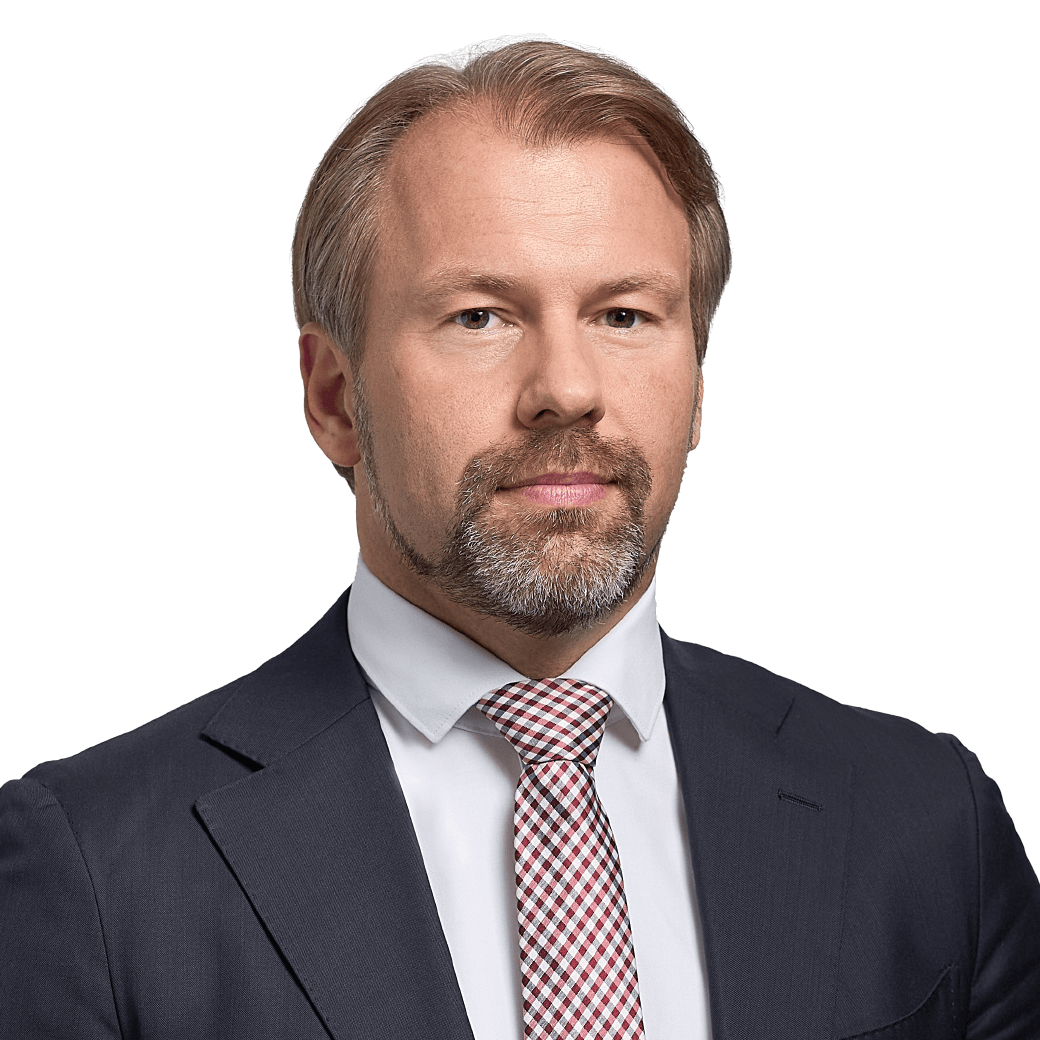Avoiding patent infringement for remanufactured products
Published on 25th January 2021
A. Introduction
The developments of recent years of remanufacturing industry on the one hand and the developments in the strategy of patent filing by many manufacturing companies on the other make one thing clear in particular: both are in growth. While the remanufacturing of technical products is subject of a growing industry, at the same time more and more companies are having their products protected by technical property rights such as patents and utility models.
If the right holders do not themselves act as remanufacturing companies on the market, the risk for legal conflicts unavoidably increases. While patentees are interested in selling their patented products as being “new”, remanufacturers aim to place the same products remanufactured - and thus “as good as new” - on the market.
A particular problem are cases in which components from different products that have become non-functional are combined with each other in such a way that at the end of the remanufacturing process a functional product, which is offered as qualitatively equivalent, is available again and thus directly competes with products of the original equipment manufacturer (OEM).
Not surprisingly, manufacturers are defending themselves against this by, among others, means of suing for injunctive relief and damages under patent and copyright law. If there is a sufficient likelihood of an infringement of property rights, remanufacturers may also face the risk of having their competitors to inspect their production sites.
This paper provides an overview of the legal qualifications of the relationship between patent protection and remanufacturing under patent law. For companies of the remanufacturing industry, it is important to know that there is no European patent law in the strict sense. This means that the legal assessment of a remanufacturing process within the European Economic Area (EEA) may differ from country to country. In order to obtain legal certainty in this respect, remanufacturers should have the product to be remanufactured assessed, at least in the local markets most important to them, to determine whether there is a risk of patent infringement. A detailed exchange of information between the company and the advisors on how to remanufacture the product is essential.
B. Principle of exhaustion as basis for legal assessment
The so-called principle of exhaustion serves as the starting point for the issue of admissibility of remanufacturing under patent law. If a patented product is put on the market within the EEA by the patent holder or with his or her consent by a third party, the exclusive rights under patent law in respect to that specific object are exhausted. Therefore, the principle of exhaustion is to be applied always in a strictly object-related manner. As a legal consequence, the general public may freely dispose of this object and use it as intended. This admissible intended use also includes, in principle, the repair of the object.
Limit of this intended use is the “new manufacture” of the object though, as the right of (new) manufacture always lies with the patent holder. Remanufacturing industry has thus established its business on precisely this boundary of patent law. It must always ask itself whether the remanufacturing process preserves the “identity” of the object already put on the market. What is still “admissible intended use” and when does this equal to “inadmissible new manufacture”?
The terms “identity”, “equate”, “intended use” and “new manufacture” already make it clear that this issue of delimitation highly depends on assessment and usually always depends on the respective individual case (cf. in detail Reisner, Die Erschöpfung im Patentrecht (Exhaustion in patent law), 2017, p. 395 et seqq.) In order to ensure compliance with patent law within the company in this context, legal advice and technical advice of patent attorneys should be obtained in more complex cases in order to design the remanufacturing process as low-risk as possible.
In addition to this issue of assessment, which the remanufacturer must decide for itself against the patent holder, the remanufacturer also bears the burden of presentation and proof for the prerequisites for the occurrence of exhaustion. Strictly speaking, the remanufacturer must be able to show and prove for each individual (!) patented product which has been remanufactured that it was placed on the market within the EEA with the consent of the patent holder. Product markings such as a CE marking can provide important evidence in this respect but are not irrefutable. In addition, there may be further problems of proof, in particular in case of putting the products on the market by third parties (e.g. third party manufacturers licensed by the patent holder).
C. Is identity still preserved? - Intended use vs. new manufacture
By now, the German Federal Court of Justice (Bundesgerichtshof, BGH) has defined a kind of “review framework" in a total of five landmark decisions in order to handle this difficult issue of delimitation in legal terms. In this respect, most courts of instance, i.e. the District Courts (Landgericht, LG) and Higher Regional Courts (Oberlandesgericht, OLG), follow the German Federal Court of Justice. The most recent decision of the German Federal Court of Justice in this context is the decision Trommeleinheit (German Federal Court of Justice, Judgement of 24 October 2017 - X ZR 55/16). However, not all constellations of cases are yet covered with legal certainty, which leads to uncertainties in practice.
The German Federal Court of Justice decides the issue of delimitation at a first stage according to whether the so-called opinion of the relevant public (Verkehrsauffassung) classifies the act (i.e. the remanufacturing process) as intended use or as new manufacture; provided that the product protected by the patent is congruent with the objects available on the market.
If this opinion of the relevant public comes to the conclusion that the act is equal to a new manufacture because the measure extends the normal lifetime of the product, the legal review already ends at this point in the vast majority of cases according to the current legal situation - the remanufacturing threatens to be assessed as patent infringement. Therefore, remanufacturing companies are well advised trying to assess, with the help of professional advice, how the opinion of the relevant public would assess their remanufacturing processes. In particular in this industry, it is in the nature of things that the layman who is not versed in patent law - and thus not technically versed - would tend to assess the professional remanufacturing of a product as a “new manufacture” of the original product.
Also the linking of the jurisdiction to the “natural lifetime” is not really appropriate regarding remanufacturing industry, because - to put it very simply - it is to a certain extent inherent in the remanufacturing of a technical product that its “natural lifetime” is extended at the same time. This creates further legal uncertainty (more on this also Reisner, Die Erschöpfung im Patentrecht (Exhaustion in patent law), 2017, p. 406 ff.).
If, on the other hand, remanufacturing is classified as a normal maintenance measure because such measures are normally expected during the natural lifetime of the product, as a rule intended use is given.
However, this does not mean that remanufacturing would not then have to be considered as patent infringement. On the contrary, it must now be issued at a second stage of review whether the opinion of the relevant public is “wrong” in its view because the act actually goes so far as to realise again the essential idea of the invention disclosed in the patent. The actual intended use may therefore constitute a (under patent law inadmissible) new manufacture in the individual case on the basis of a balance of interests. The balance of interests defines whether the technical or economic advantages of the invention are again realised by the remanufacturing process. In other words: Does the replaced component reflect the technical effects of the invention?
It is precisely this issue which constitutes the “core assessment under patent law”. Here, in particular, many detailed issues are currently still open, especially the issue of the delimitation from a mere functional interaction (funktionales Zusammenwirken) of various objects mentioned in the patent claims (see also Reisner, GRUR 2020, 345). What is the “highlight” of the invention? And does the component to be replaced play a decisive (new) role in this “highlight” or is the component a mere passive object? In the event remanufacturing companies do not have their own patent department, external specialists should always be consulted to perform this assessment.
If already at the first stage of the review no appropriate opinion of the relevant public can be determined because the protected product as such is not available on the market, the “core assessment under patent law” described above has to be performed directly in step one according to the current legal situation.
D. Particular group of cases: assembly from different objects
The group of cases already mentioned at the beginning and extremely relevant to remanufacturing industry is the assembly of an object from different objects previously put on the market; this group of cases was last dealt with in detail by the German Federal Court of Justice in the 1950s. The date of the most recent decision of the German Federal Court of Justice in the field of delimitation between intended use and new manufacture (German Federal Court of Justice, judgement of 24 Oct. 2017 - X ZR 55/16 - Trommeleinheit ((drum unit)) makes it clear that a new fundamental decision is urgently needed for this group of cases, which is particularly important for remanufacturing industry. So far, however, such a decision is a long time standing. However, statements by the German Federal Court of Justice at the oral hearing on the case Trommeleinheit (drum unit) at least give hope that there could also be an amendment to the old decisions at this point (Graf Ballestrem/Richly, GRUR 2018, 262 (264)).
Until that time, remanufacturing industry faces the legal challenge of overcoming the preservation of identity of the products previously put on the market, which is - strictly speaking, in cases of assembly from different components - no longer given with regard to the issue of exhaustion, by means of convincing arguments. In our opinion such arguments can be found primarily in the technical teaching disclosed in the relevant patent specification. As a rule, an assessment of the respective individual case will be unavoidable.
E. Conclusion
Admissibility of remanufacturing under patent law always depends on the circumstances of the individual case. If the product to be remanufactured falls within the scope of protection of existing technical property rights, the further assessment depends on the extent to which remanufacturing constitutes an intended use of the product already put on the market or whether it is, according to assessment, already equivalent to a new manufacture. In the latter case, remanufacturing has to be considered inadmissible under patent law. However, the stages of review outlined above make it clear that this assessment depends on factors in individual cases which may be highly controversial in detail (opinion of the relevant public (Verkehrsauffassung), product identity, lifetime, reflection of the technical effects of the patent, etc.).
It has also not yet been conclusively clarified to what extent the patent holder (often the OEM him- or herself) has contractual leeway in the first sale in order to restrict subsequent remanufacturing of his or her products. At the heart of the assessment is the principle of exhaustion. Comparable aspects can also arise in connection with the maintenance of machines and systems protected under patent law, whereby additional aspects of process protection under patent law and contract interpretation often become relevant.
Due to the complexity described above, joint coordination between the production department and - if available - the patent department, is indispensable. In cases of more extensive measures, external advice should always be sought. The risk of patent infringement can be reduced only by means of such an assessment regarding the concrete individual case.





